We’re aware that every breed promises to steal your heart, but this one really will.
The standard Bernedoodle is so stubborn he’ll keep on pushing ’till he gets all your love and attention. There’s nothing wrong with that, right?
When deciding which lovely Doodle to make a part of your family, consider this breed.
The Bernedoodle is among the best Poodle mixes out there. After reading this text, you’ll know exactly why that is so.
Are you ready to hear some unberneable facts about our standard Bernedoodle?
Bernedoodle: How It All Began
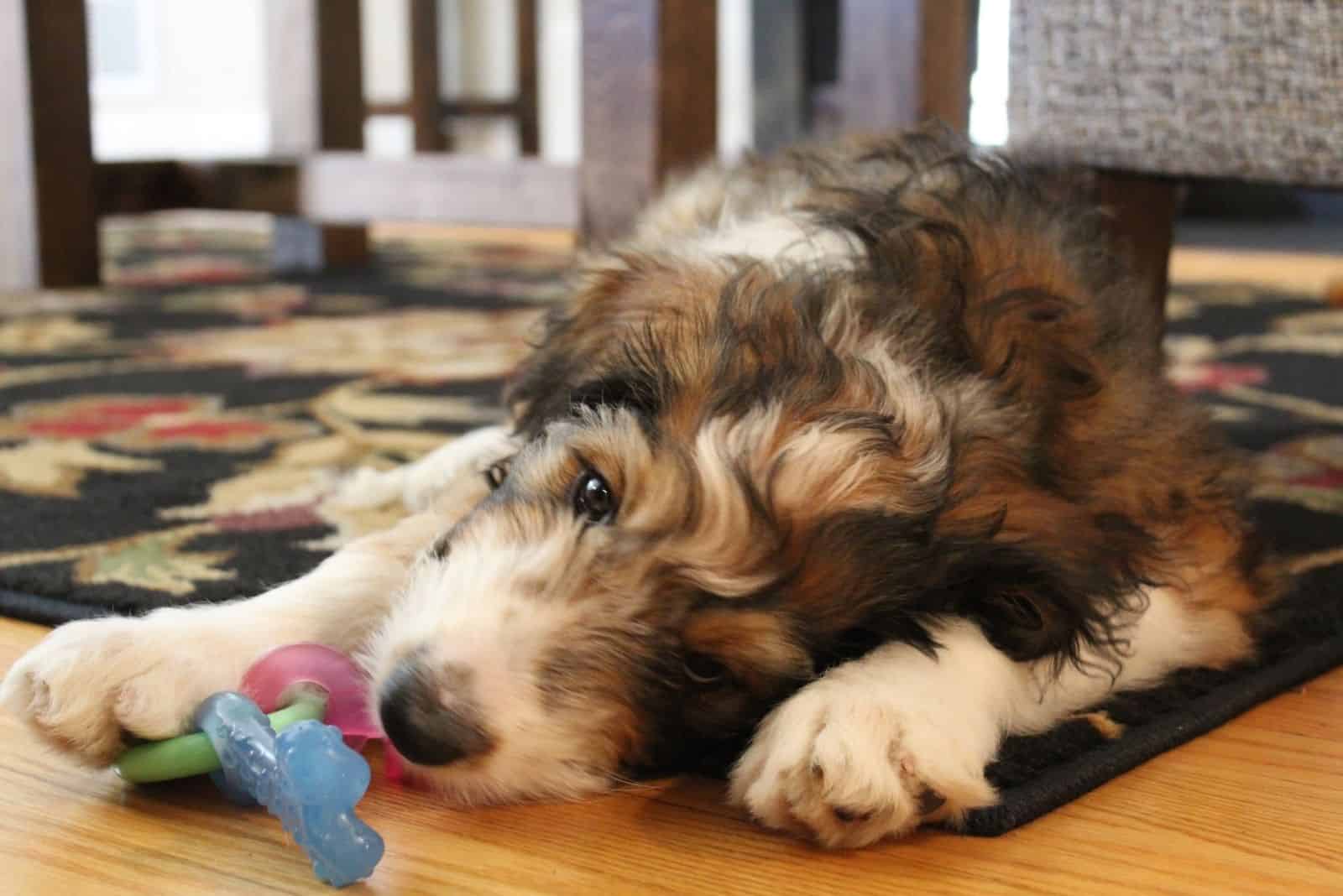
The Bernedoodle is a relatively new breed.
It all began back in 2003 when Sherry Rupke, of Swissridge Kennels, was the first to breed Poodles and Bernese Mountain Dogs to get a Bernedoodle.
However, it is possible that these dogs existed before as a result of accidental breeding.
Since Bernedoodles are hybrids of two purebred dog breeds, they’re not recognized by the AKC, but the American Canine Hybrid Club and the Designer Dogs Kennel Club, as well as the Designer Breed Registry, do recognize this mixed breed.
Even though they’re a designer breed, it is still possible to find a Bernedoodle in a shelter or in Poodle and Bernese Mountain Dogs rescue groups.
Always opt to adopt instead of shop!
Personality: Are Bernedoodles Sweet Or Feisty?
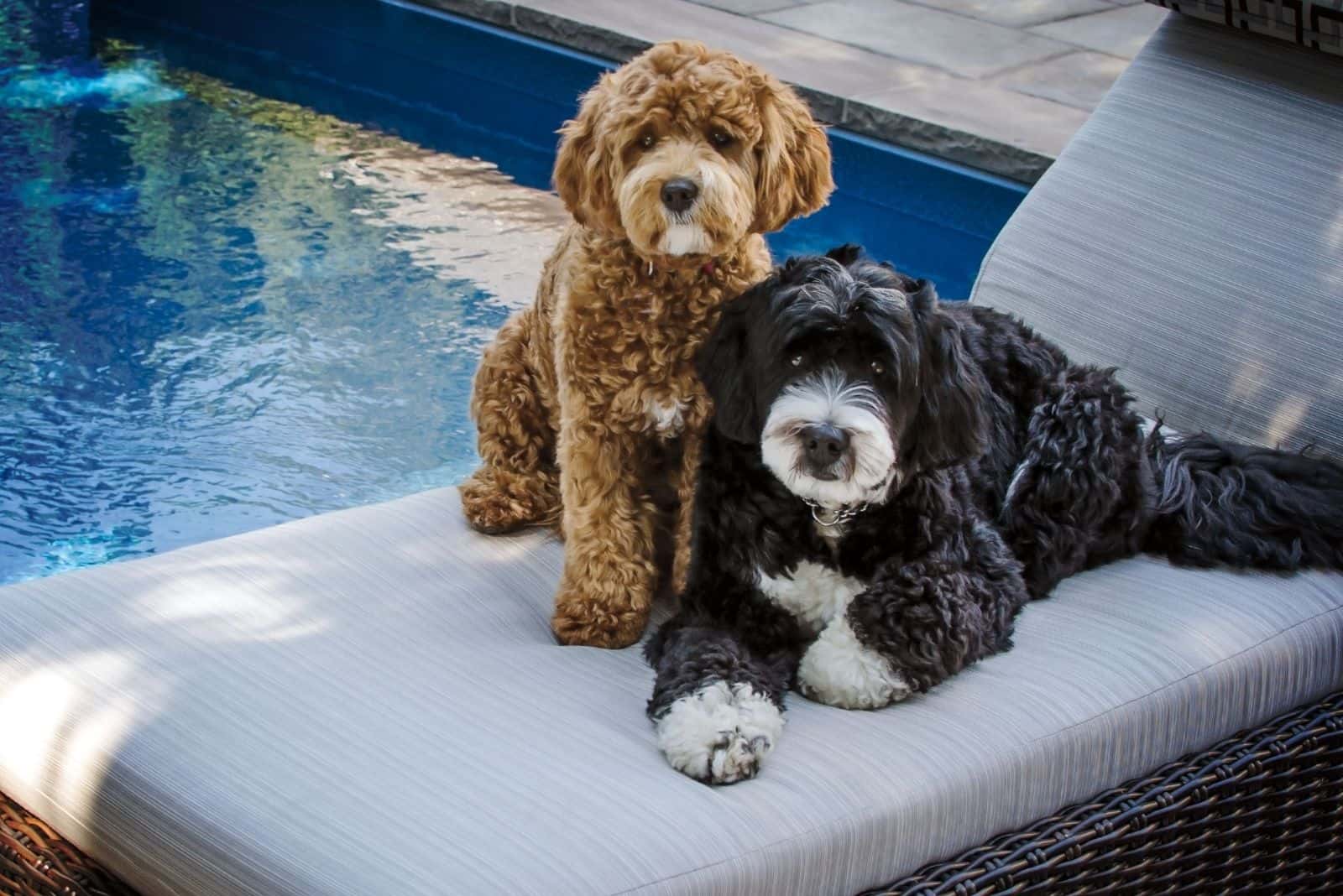
It appears that Bernedoodles got only the best of their personality traits from both sides of the canine families.
However, it is hard to determine which trait comes from which parent. Bernedoodles are very smart pups as well as hardworking, loyal, obedient, and a bit quirky.
If socialized from an early age, these pups will get along perfectly fine with small children and other pets.
In some cases, the Bernedoodle will inherit the stubborn trait from the Bernese Mountain Dog.
This makes them hard to train, but still, the stubbornness usually fades away when they reach adulthood. Once you start the training, you’ll realize how easily they pick up commands.
In addition, the Bernese side may give another problematic trait, which is apprehension around new people.
This is exactly why socialization is of great importance, especially while they’re still Bernedoodle puppies.
These are dogs that have a high energy level, so make sure they get at least moderate tempo exercises.
They love being in the center of attention and hate being left alone for a long time.
Our pup of the day, the standard Bernedoodle, doesn’t do well in tiny apartments like tiny and miniature Bernedoodles do.
They need fresh air, space, and long walks daily to lose that extra energy.
Still, it’s a great thing that the Bernedoodle will do anything with its owner, from extensive workout sessions to cuddling on the couch!
The Bernedoodle’s Pedigree

The Bernedoodle is a 50/50 mix of a purebred Bernese Mountain Dog and a purebred Poodle.
They’re called the F1 Bernedoodle or the first-generation cross. It’s stated that these dogs are much healthier than both parent breeds, and they show off only the best traits of both parents.
Also, it is possible for a Bernedoodle to have more or less than 50 percent of each parent if a first-generation Bernedoodle is bred with a Poodle or a Bernese Mountain Dog.
Even though they’re not hypoallergenic like the Poodle parent, the F1b puppies are still low shedders and make great dogs for people prone to allergies.
The F1b Bernedoodle‘s genes are diluted to 25 percent, whereas the Poodle, as a non-shedding parent, gets a 75 percent stake.
The F2 puppies are not as desirable as their parents. They’re a product of an F1 Bernedoodle crossed with another F1.
The F2 gen is more affected by the health issues of their ancestors. Also, they seem to have less attractive coats.
However, beauty is in the eye of the observer.
Every Bernedoodle is affectionate and playful with all members of their human family.
Coat Color And Grooming: Keeping That Fur Furrbulous
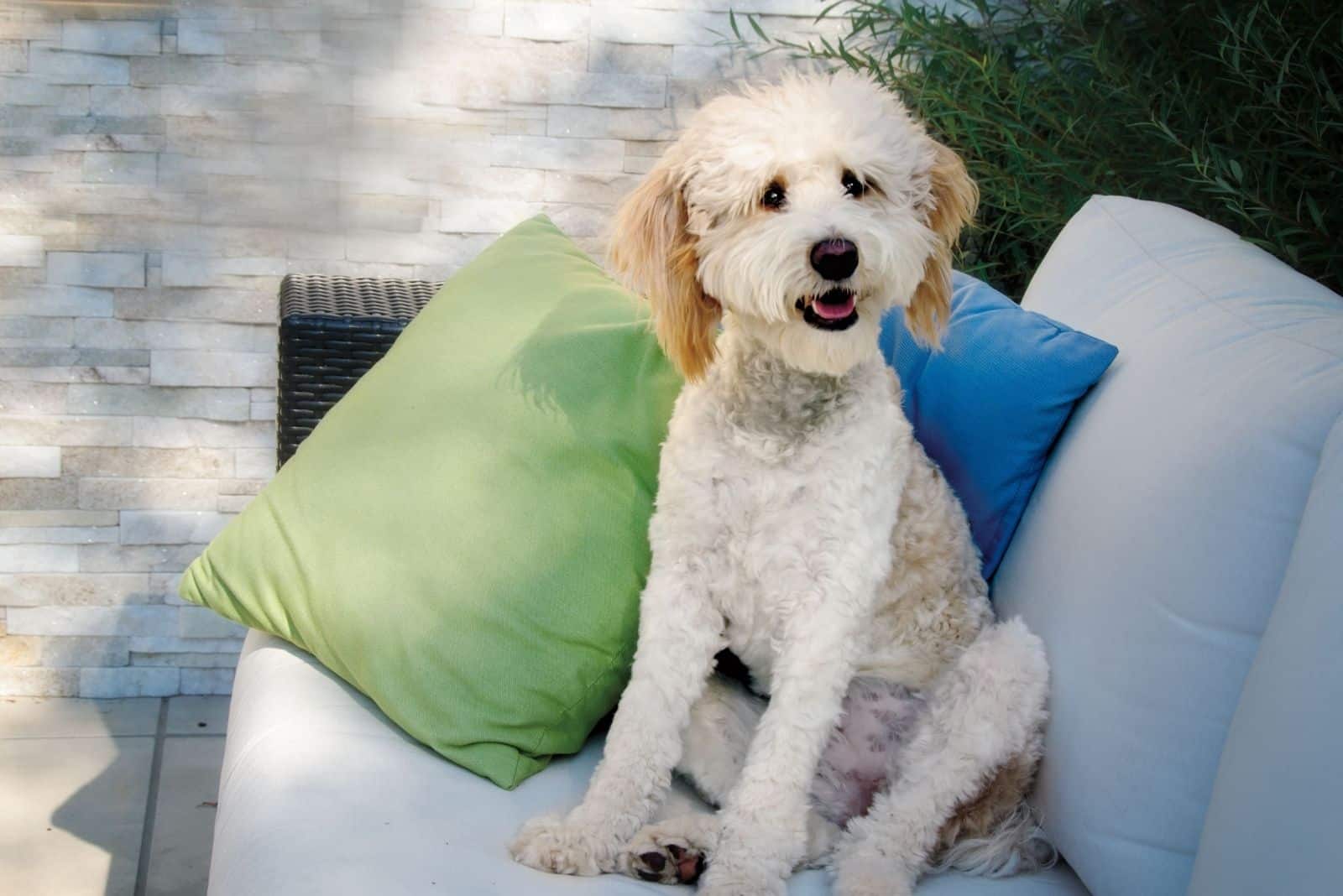
Bernedoodle coats vary between the Poodle-like curly coat and Bernese’s straight wooly coat.
The standard Bernedoodle usually has wavy coats to curly coats that don’t shed much or release dander.
Some Bernedoodles have straight coats, which shed more, but unfortunately, this means that they don’t have the hypoallergenic trait.
Their thick coat helps regulate their body temperature in winter and summer months, allowing them to get cool or warm up.
The color also ranges from pure black to black and white, black and brown, etc. Sometimes, Bernedoodles are tri-colored dogs with patches of black, white, brown, or even sable.
The most popular coat color is a tri-colored option, which greatly resembles the Bernese Mountain Dog.
The curlier the coat is, the harder the Bernedoodle is to get groomed. These dogs need brushing as often as they can get in order to prevent matting and tangling.
The coat should be trimmed a bit considering how fast it grows. Brushing not only promotes good hygiene, but a time well-spent together!
The curlier the Bernedoodle’s coat is, the harder it is to groom, and because they shed less, they need to be brushed more often to prevent their coat from getting matted.
Some Bernedoodle owners brush their dog’s coat daily and treat it as a bonding experience, which this breed tends to love. Their coat must also be trimmed every few months, depending on how quickly it grows.
Size: How Big Do Bernedoodles Get?
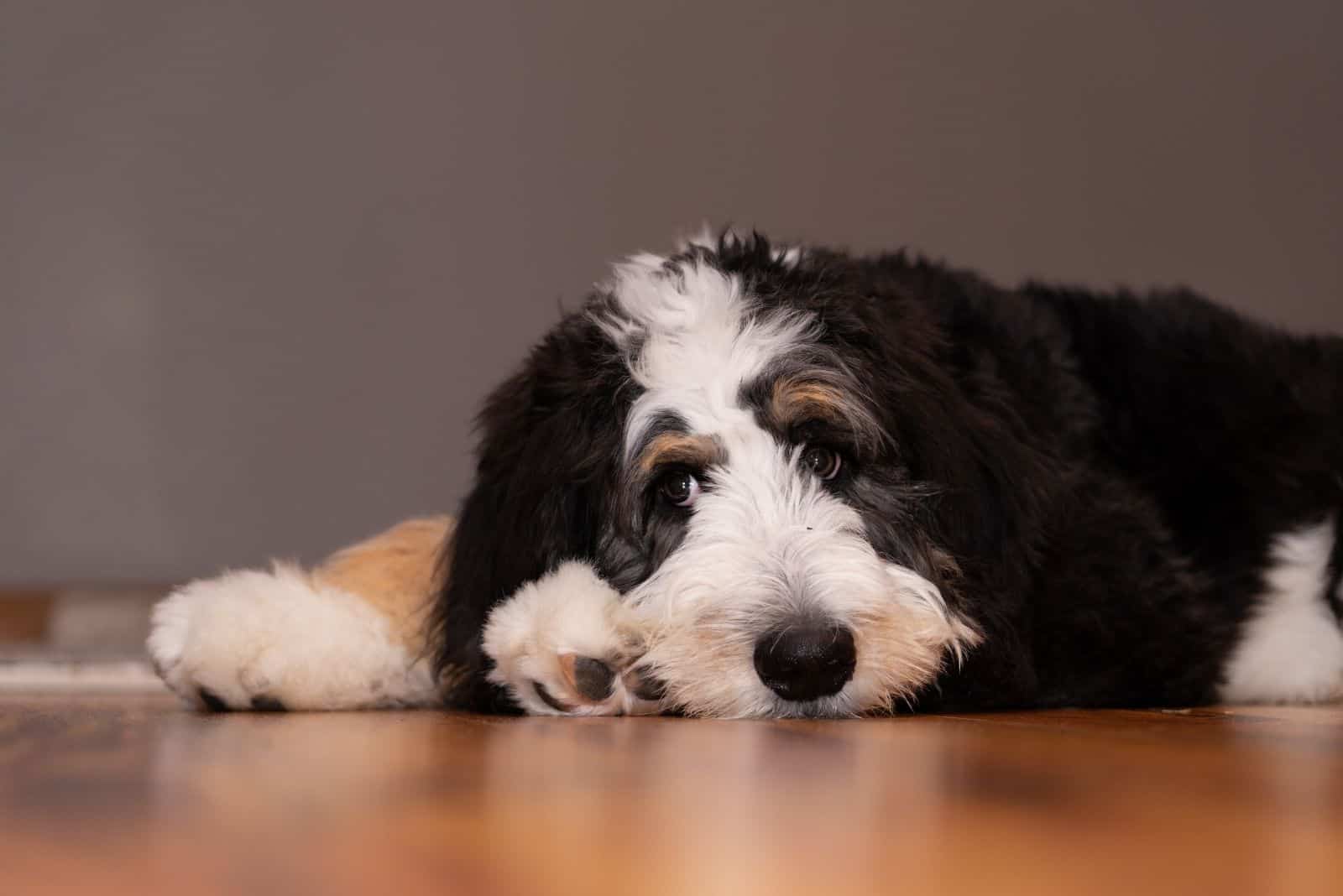
It’s always hard to predict how big a mixed puppy will get.
There are three different sizes of adult Bernedoodles: tiny, miniature, and the standard Bernedoodle.
The size of the Bernedoodle depends on the size of the Poodle parent, which can be a toy, a mini, or a standard Poodle.
The Tiny Bernedoodle is 12 to 17 inches tall at the shoulder and weighs around 10 to 24 pounds.
The Miniature Bernedoodle stands at 18 to 22 inches tall. He can weigh around 25 to 49 pounds.
The Standard Bernedoodle is 23 to 29 inches and weighs 70 to 90 pounds. As a rule, males are generally larger than females.
If the breeding program is done correctly, you can have a Bernedoodle that can fit any home.
What Do Bernedoodles Eat?
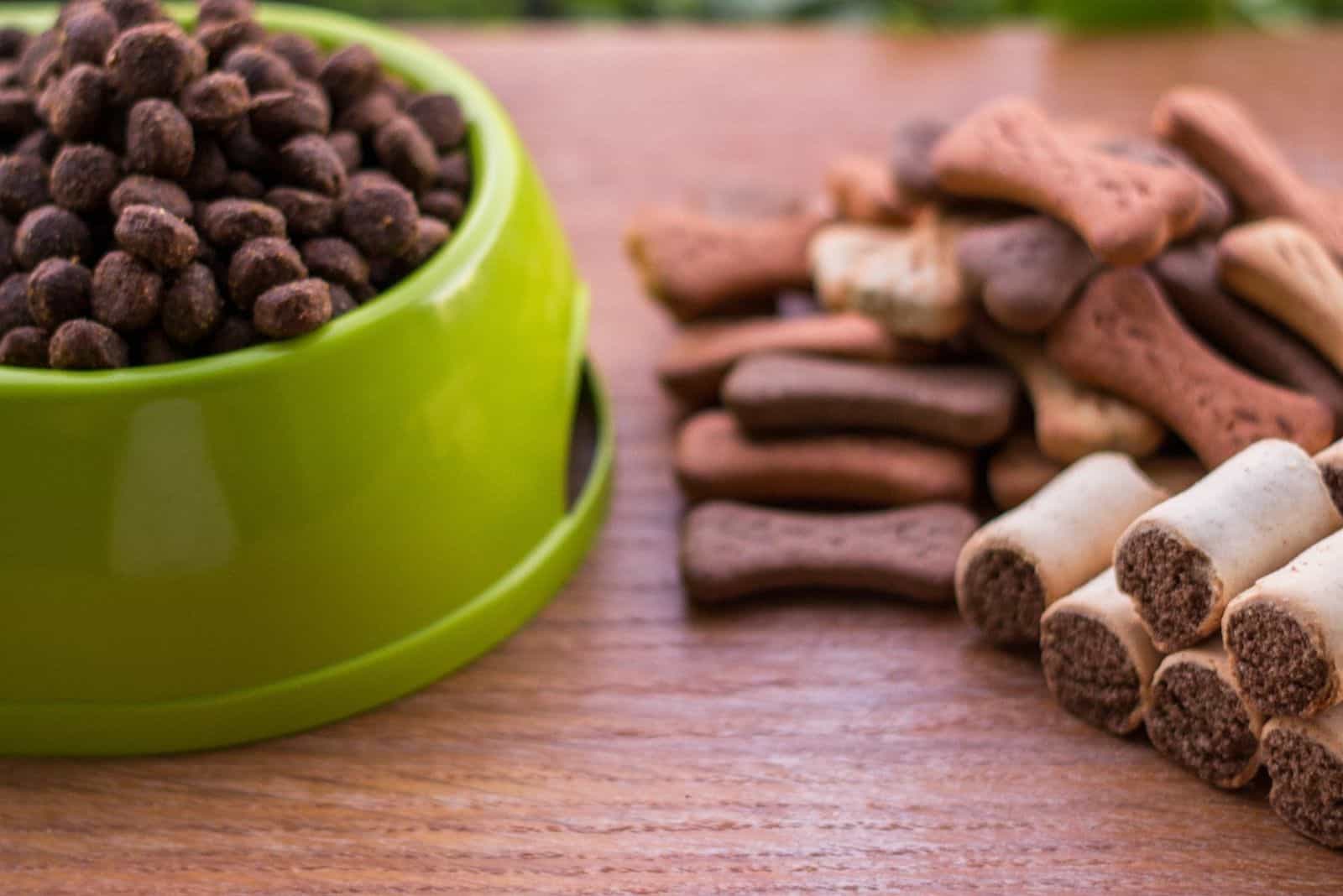
The best way to adapt dog food to your pup’s needs is to go with food designed according to your Bernedoodle’s size.
This goes for all life stages that this Doodle goes through.
Toy and Mini Bernedoodles should eat food designed for small dog breeds. The standard Bernedoodle would eat large-breed formulas.
Even though some dog owners and Bernedoodle lovers opt for cooking raw meals for their dogs, we must add that this kind of diet can cause severe vitamin deficiency.
If you don’t eat all kinds of junk food, why should you feed your dog ridiculous-quality kibble?
Are Bernedoodles Healthy Pups?
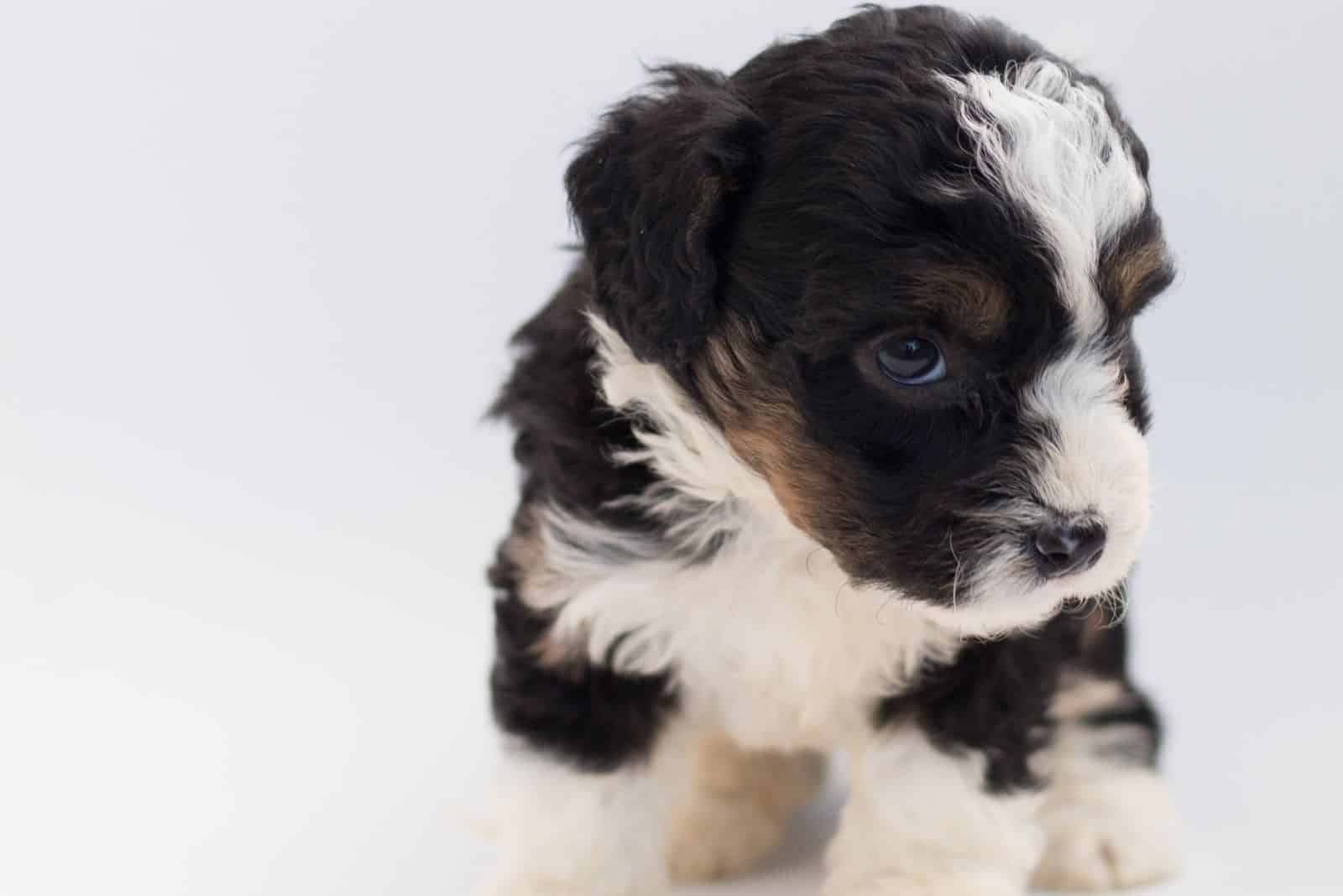
In general, the standard Bernedoodle is a healthy pup. The whole point of mixing two breeds was to create a healthy version of both worlds.
This designer breed is supposed to have fewer health issues than typical purebred dogs.
Bernedoodle breeders claim that the F1 puppies are least likely to suffer from hereditary health conditions.
The same goes for the Australian Bernedoodle since their gene pool is more diverse.
However, like all other dog breeds, whether they’re purebred or a mixed breed, Bernedoodles are prone to developing some health problems.
Some of the problems include:
• eye problems
• numerous skin problems
What’s interesting about this dog breed is that different types of Bernedoodles have different health concerns.
Take the F1b Bernedoodle or the tiny Bernedoodle for an example.
These types are more prone to developing digestive conditions and immune system diseases because they have a high percent of Poodle genes.
Pups that take after the Berner parent might have issues with bones.
Any reputable Bernedoodle breeder will do health and genetic testing on the pup’s parents as well as on the litter to assure you that there are no predispositions to hereditary diseases.
Still, even though science has gone far, it is not possible to completely determine whether the dog will be disease-free.
The best you can do for your dog is maintain a healthy lifestyle, meaning an appropriate diet, plenty of exercise, and regular vet check ups.
Life goes on whether we’re healthy or not. It’s simply how things doodle away.
Lifespan: How Long Will My Bernedoodle Be With Me?
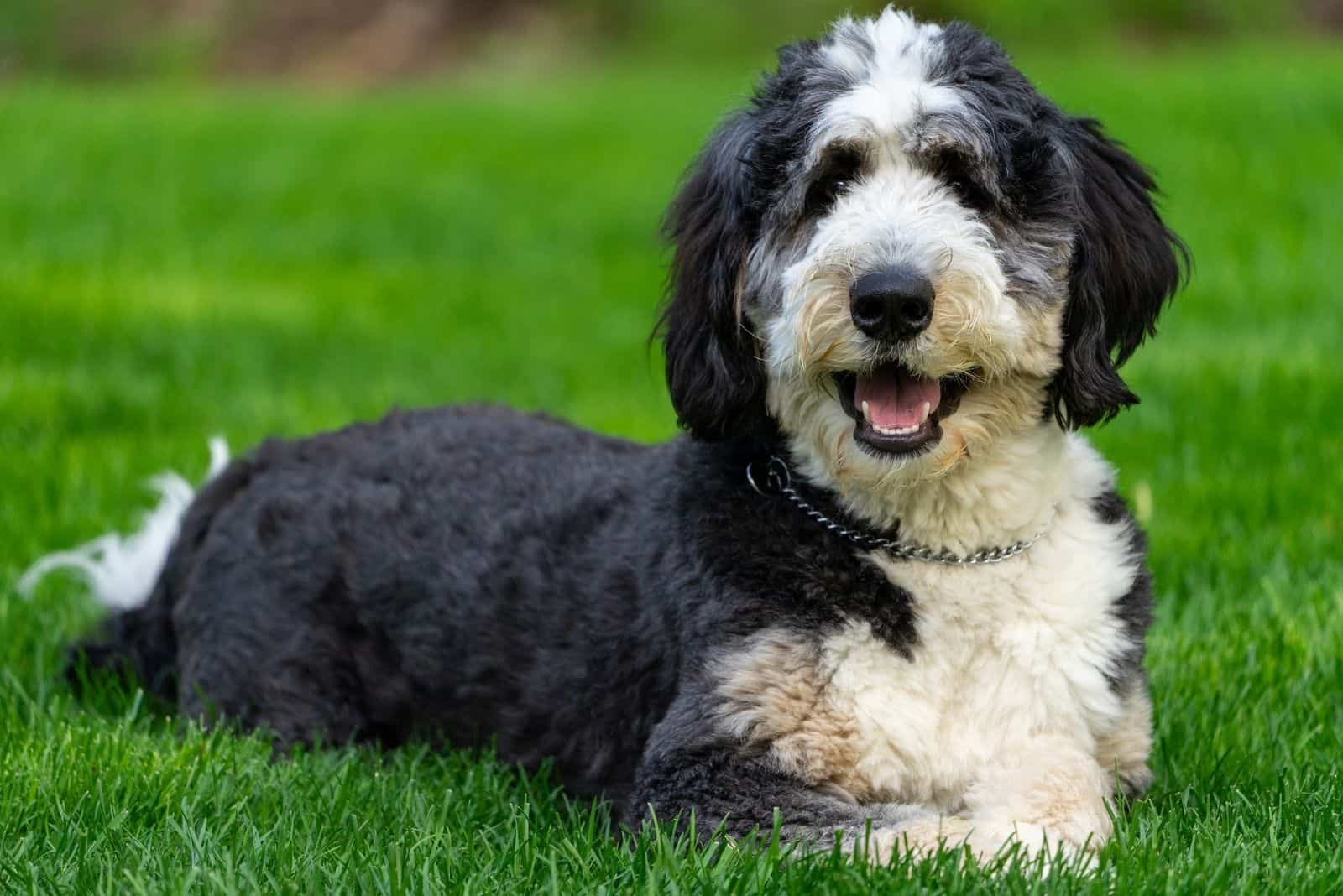
The Bernedoodle is a fairly new breed, meaning it’s still being perfected.
We don’t have much info about their lifespan, so there isn’t a definite answer that would put all Bernedoodle lovers at peace.
However, breeders estimate that their average life expectancy is around 12 to 15 years.
This expectancy is best applicable to the standard Bernedoodle, as other, smaller types may live longer.
Let’s just say if he leads a good life, your Bernedoodle will be with you for a significant period of your life.
Training: Teaching Tricks And Commands
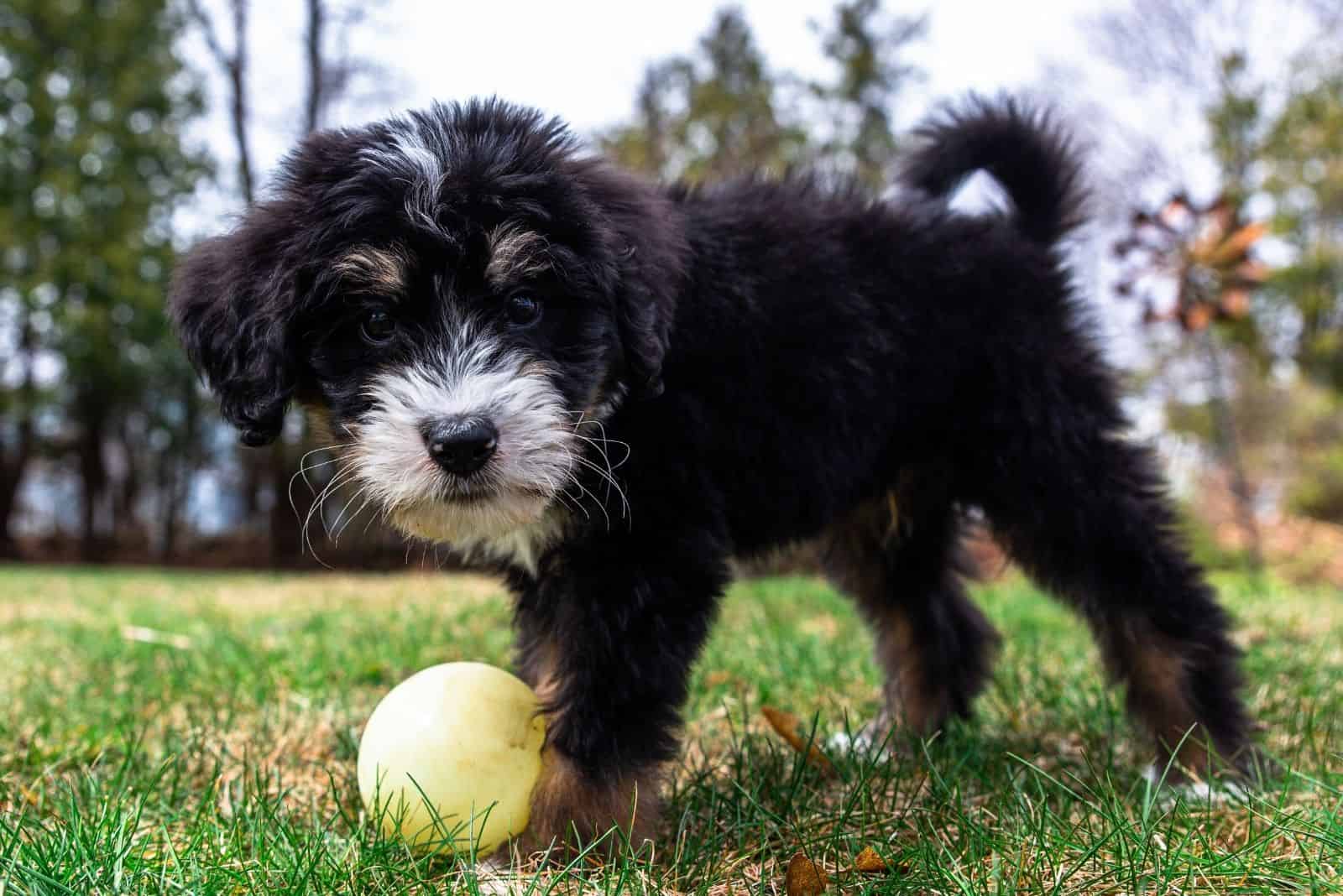
The stubborn trait that the Bernedoodle pups get from the Bernese parent usually shows up in puppyhood.
They can be quite headstrong and energetic, but it all goes by once they’re fully grown.
This is exactly why it’s important to start with early socialization. Your Bernedoodle puppy must begin training as soon as it comes home.
Unlike other breeds, there’s a small window of opportunity to train this pooch.
If you do the training well, the Bernese Mountain poo will be an easily trainable pup. This ability comes from their high intelligence, calm attitude, and the wish to please their master.
Still, these are Bernedoodle puppies, not baby Unicorns. They can and will act however they want just because they’re puppies.
You can’t expect them all to act perfectly fine. There will be mischief as well as ups and downs before you can tell that your puppy is trained. Patience is the key to success.
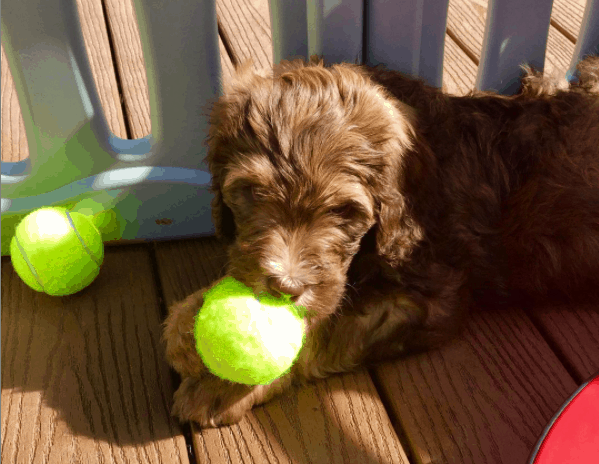
Photo from: @cry_woof_bernedoodles
Without proper training, your pup could grow up and develop serious behavioral issues.
Start the training with something simple like potty training or walking on a leash.
Have them meet different people and animals, and face different situations as this will all help with socialization.
Once you’ve mastered the easy tasks, you can move to the tricks.
Bernedoodles that take more after the Poodle parent have a genuinely good trainability level when it comes to completing fun tricks.
Not only will your pup get the necessary exercise, but you both will also bond!
Exercise Requirements: Finding The Vent
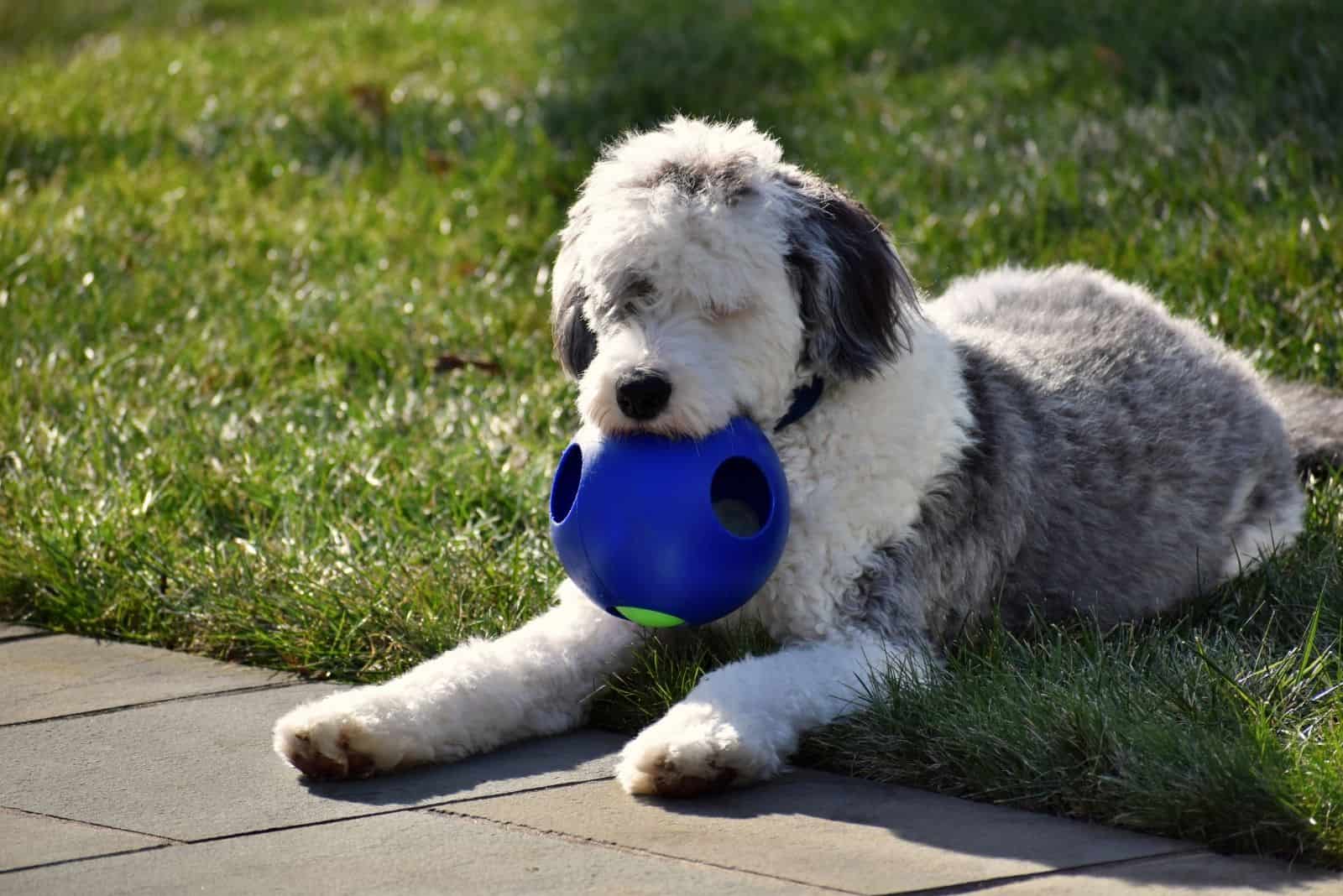
The standard Bernedoodle is a moderately active breed.
They cherish more time spent together with their owner than exercises alone.
Whether you take them out for a hike, a morning jog, or for a playdate in the park, your Bernedoodle will be thankful.
If you’re a couch potato, you’re lucky, too! The Bernedoodle loves hanging out on the sofa and snuggling. These are cuddle creatures that love to feel the love.
Those of you who might think the standard Bernedoodle would do just fine by being a working dog or a service dog are very wrong.
This breed was designed specifically to be a companion, always by your side.
They’re adaptable and easy-going, meaning they will adapt to any lifestyle and situation.
Although dogs don’t like being left alone for a while, sometimes, you just have to go outside to earn a dog kibble.
This is when dog puzzles and various toys come to help. Not only will they be entertained, but they will be mentally stimulated, too!
Bernedoodle Puppies: The Pure Love
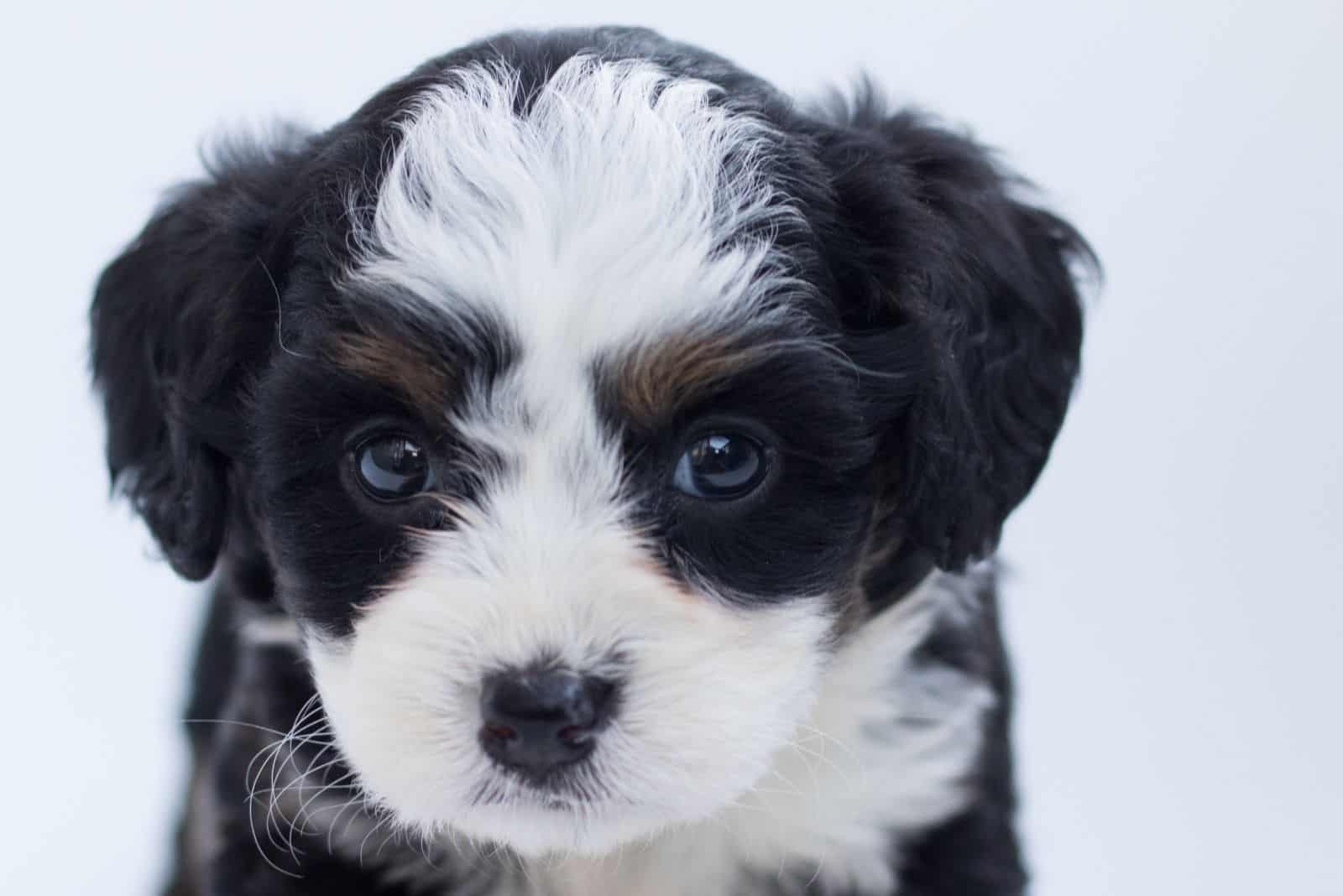
If you compare the two parent breeds, the Bernese and the Poodle, you’ll understand why the Bernese is always the mother. Due to this size difference, the number of puppies in the litter may vary a lot.
Dogs that are big breeds can give birth from two to 12 puppies. There are no rules written in stone here.
But still, there is one rule that is rather not so wonderful that follows the Berner dog. It appears that Bernese mothers aren’t such good mommy dogs after all.
Bernese puppies tend to thrive hard at the same rate. The mother doesn’t make things easier either.
It is no wonder why breeding this dog is such a complicated process. And, pricey, too!
Depending on the particular breeder, Bernedoodle puppies can be quite hefty. Expect to pay somewhere between $1,500 to $5,000 for a pup.
The price also depends on the coat type and the size of the puppy. Black and bi-color Bernedoodle puppies cost less than mini Bernedoodles, merles, or tri-color ones.
No matter which pup you end up with, one thing is for sure: the Bernedoodle is a fluffy bundle of joy that will make your life anything but boring.
Is The Standard Goldendoodle Good With Children And Other Pets?
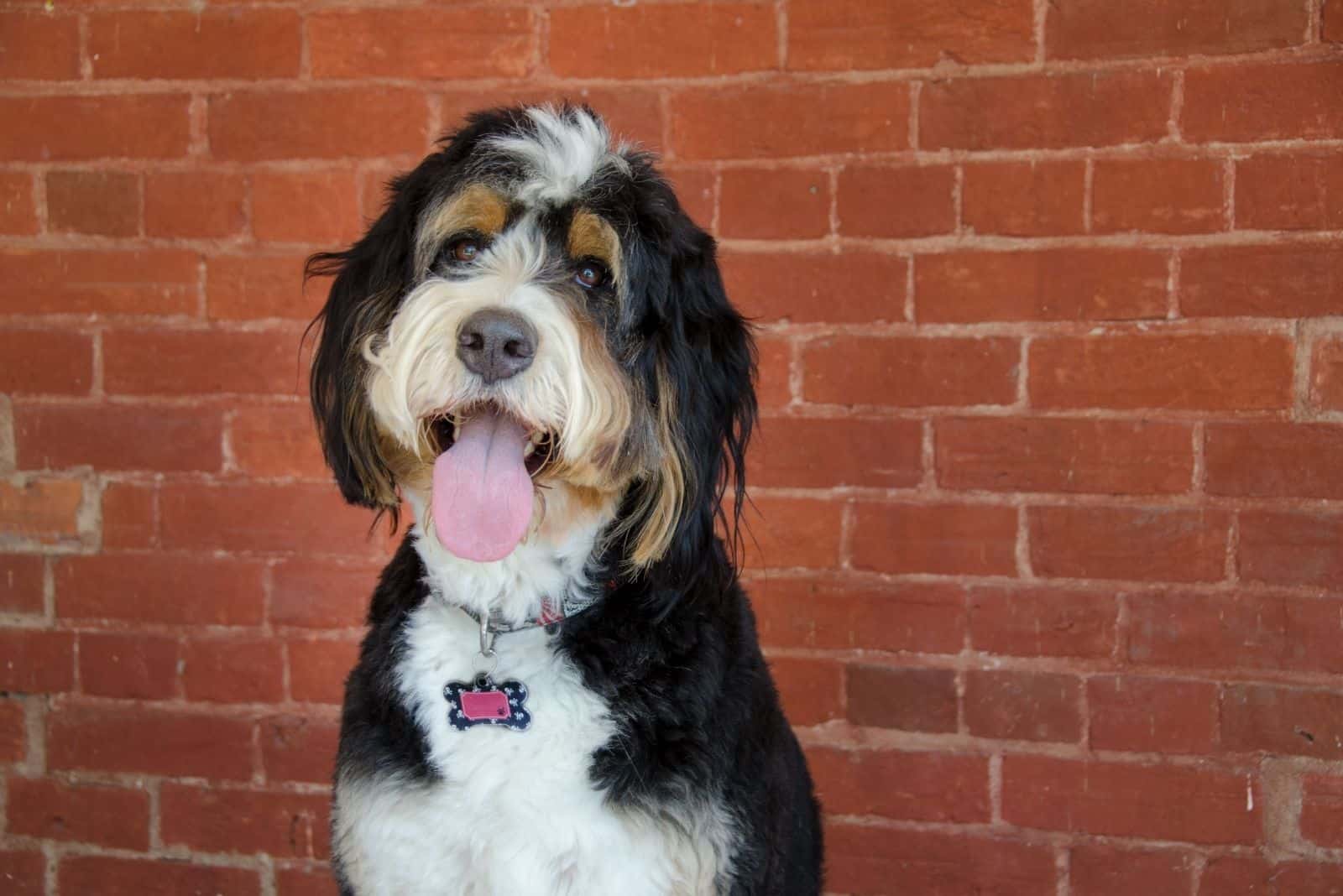
A big, fat YES!
Bernedoodles are terrific with children as long as you teach your children how to treat your four-legged family member.
Unlike standard Bernedoodles, the Tiny and Miniature Bernedoodles should be handled with care because they can get injured easily.
There’s nothing these pups love more than spending time with their families. They show their affectionate side all the time, and they absolutely cherish every moment spent with their family.
In addition, Bernedoodles do well with other dogs and pets! Still, early socialization is a must in order to ensure that the Bernedoodle would be fine around new pets.
Rescue Groups: How Common Are Bernedoodles?
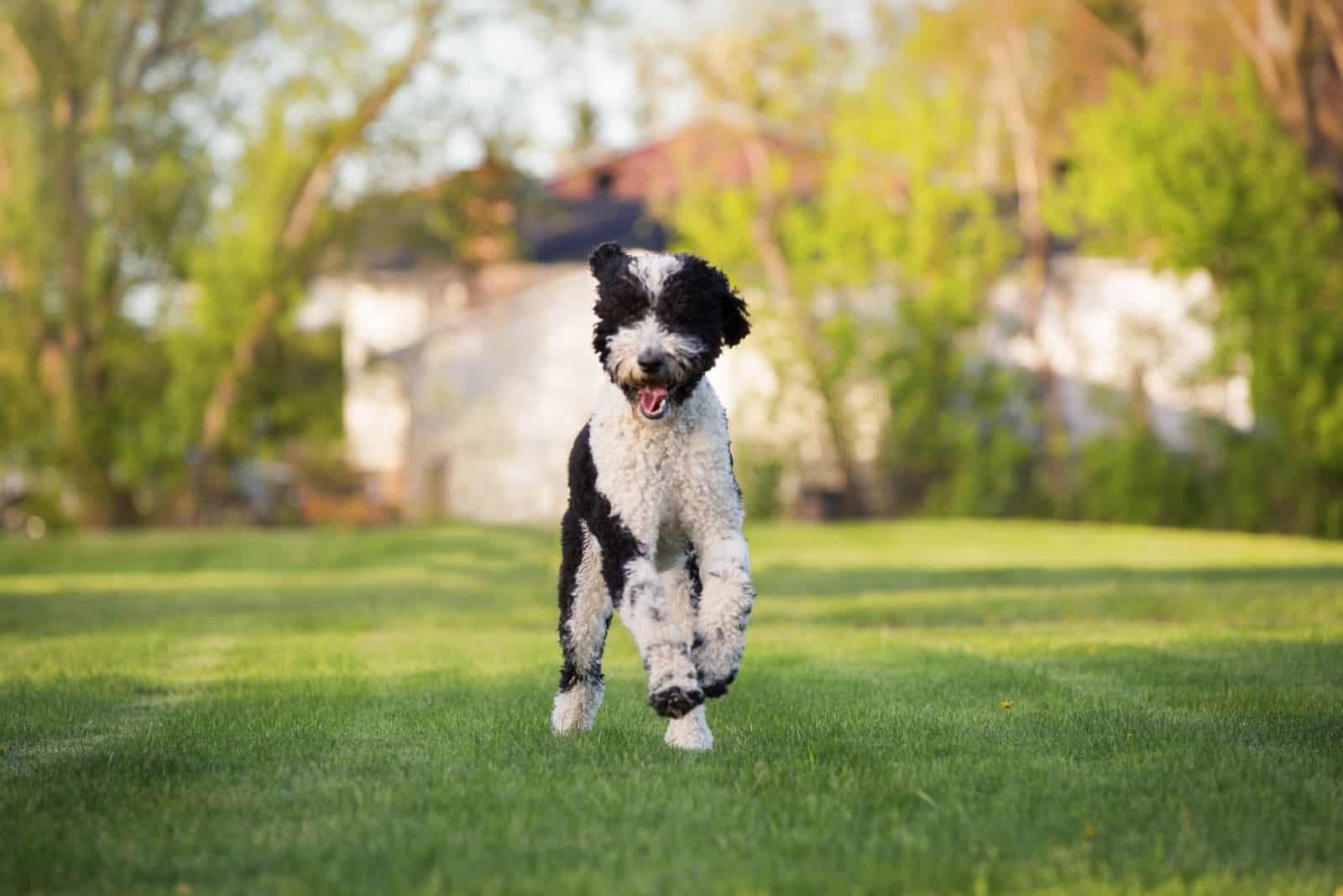
Despite being such a lovely crossbreed, Bernedoodles are still rare in shelters and rescue groups.
While there aren’t any specialized Bernedoodle rescue centers, there are many shelters that are home to many Poodle mixes.
Of course, you can always be on the lookout for a new pup in your local shelter. Who knows; maybe, one day, a cute little Bernedoodle puppy will come to you.
Finally
Bernedoodles are as sweet as any other Doodle. Okay, they might be sweeter, depending on what you like!
They’re definitely among the smartest, friendliest, and cutest mixed breeds in the whole world.
Now that you know all about the standard Bernedoodle, will you make this dog a part of your world? What would you name your Bernedoodle?
Read Next: Is Toy Bernedoodle A Dog For You?


